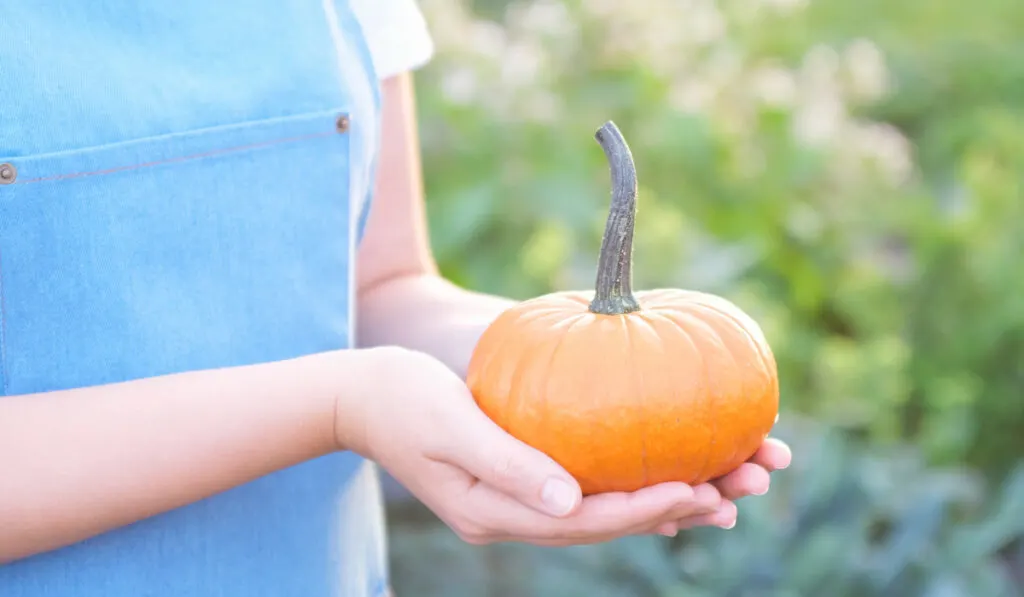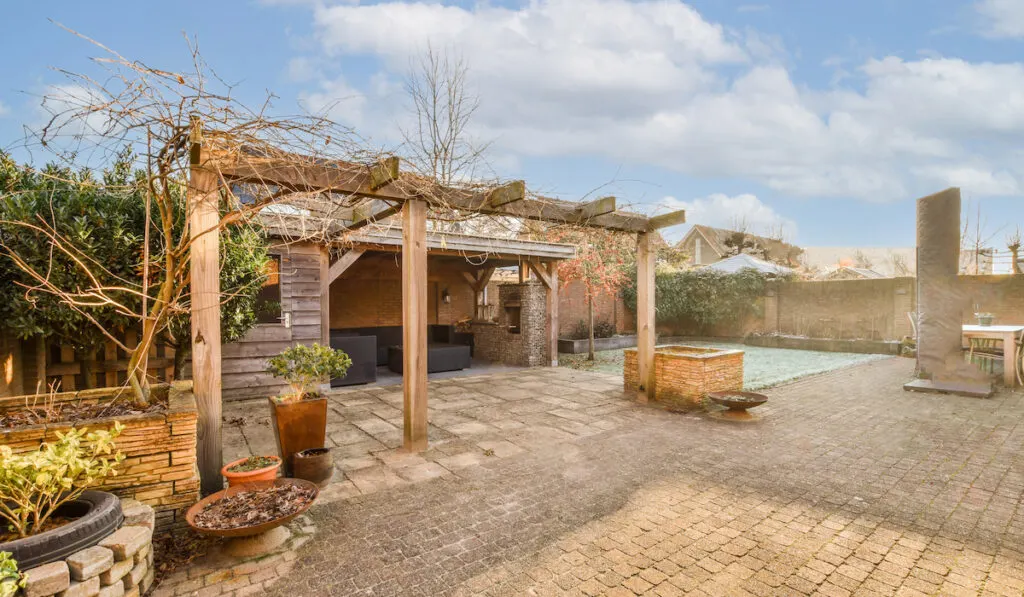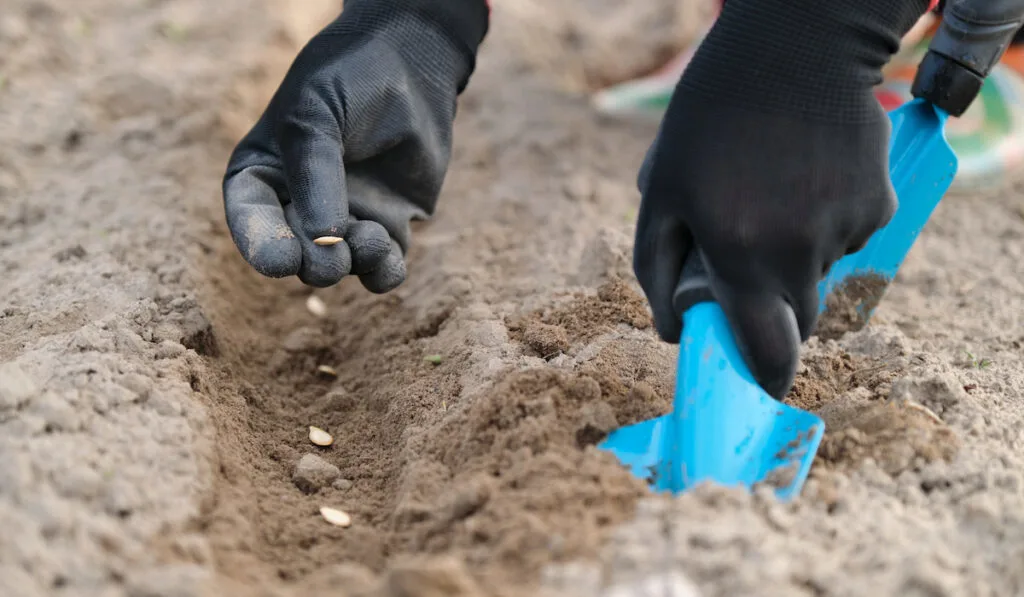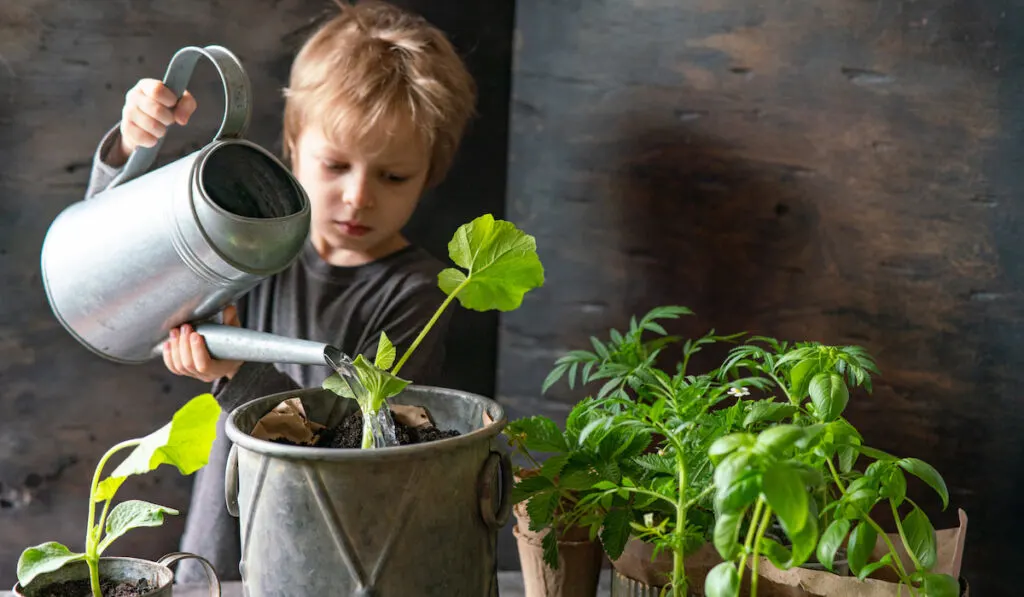People who are close to nature love growing a variety of plants in their gardens. However, not every nature lover can afford a spacious garden.
It is even a bigger problem if they want to grow pumpkins. As pumpkin vines cover a lot of area and tend to ramble everywhere, they need ample open space to grow. It might lead people to think that their dream of planting pumpkins in their garden will remain unfulfilled, which is not true.
Here we have listed several tips to employ if you do not own a big garden. These tips will not only help you grow plants in a small space but also provide you with many benefits. For instance, it is convenient to take care of plants with these tips, and the plants bring beauty to your garden and life.
Table of Contents
1. Grow Vertically on a Trellis

Growing plants vertically has become a widespread practice around the globe. Gardeners usually recommend growing plants in a vertical position for many reasons. For instance, if you are tired of slugs or other insects which might ruin your newly grown plants, growing them vertically would help a lot.
This method also helps if you do not have enough space and want to grow more than a few plants in a small space.
People often want to grow pumpkins in their garden, but they do not have enough space to plant them. So, they could adopt this method and cultivate them even if they have a mini garden.
To grow pumpkins vertically, you need a trellis sturdy enough to support the pumpkins. A-shaped trellises work best for this plant. Their firm and sturdy base support of two sides help the plants stay in place and allows you to guide the vines for pumpkin formation. The variability of this shape can also harmonize with your garden aesthetics.
2. Pumpkin Hammocks along Fences
Some vines take up a lot of space and do not leave room for other plants. Pumpkins vines are this way—they grow quickly and cover a large area.
Pumpkin hammocks are a terrific way to grow this fruit in your garden if you do not have enough capacity on the ground. Using hammocks along the fences resolves the space issues.
All you need to practice this idea is an old cloth or bag that can form the long pieces of the sling. Employing this hanging method could provide you with other rewards as well.
For instance, your pumpkins will be out of the reach of animals which could harm them, and also, they would not have to rest on the wet ground.
3. Use Containers
Another way to plant pumpkins in limited space is using containers. When you use a pot or container, the one challenge you might face is the size of it. The gallonage required depends upon the ultimate size of the pumpkins that will be produced.
If you are planning to grow bigger pumpkins, 15- to 25-gallon pots would be perfect. For small-sized fruit, one could choose a container of 10 gallons.
The ideal way to grow pumpkins in pots is to know when you want to grow them. The position of the container also matters a lot because it must face the sun.
4. Choose Smaller Pumpkin Varieties

Pumpkins are versatile plants and are easy to grow, but sometimes it is hard to choose which size is the most suitable according to the available space. Some pumpkins are too large to fit in a small garden. However, one could still plant small-sized pumpkins and enjoy their beauty all the same.
Baby Boo, Munchkin, Bumpkin, Baby Pam, Cannon Ball, Blanco, Mischief, and We-Be-Little are some of the mini or small pumpkin varieties which one could grow in a limited area. Pumpkins weighing 2 pounds or 0.9kg are quite convenient to grow in a small area.
One could also choose mid-sized cultivars such as Autumn Gold, Bushkin, Spirit, and Ghost Rider. They could also fit in the small garden.
5. Pumpkin Teepees
Making pumpkin teepees is also one of the space-saving methods one could employ. They are so easy to make and give an amazing look to the garden. To create a pumpkin teepee, you will have to plant seeds in a triangular shape.
As they start growing, your next step is to take pairs of bamboo sticks and dig them into the soil beside the sprouts. Tie them together at the top to make them look like a teepee. The stick length can be your choice.
Once the vines start to grow, bind the stems to the sticks so that they can grow upwards. The vines might cross and grow over each other but you can restore some order by binding them individually. When finally, it is time to harvest the pumpkins, cut them by the stem handle using pruning shears or a sharp knife.
6. Use Arbor Arches
Using arches is one of the methods to grow pumpkins in a small area. When the fruit starts to grow, bind the vines to the walls of the arch. As the vine grows, the plant’s tendrils tend to wrap around it and provide its own direction.
Using arches not only helps you to grow plants in a smaller area, but it also helps you to save them from weeds, animals, and wetness. You could gain an amazing aesthetic look for your garden with arches.
7. Employ a Pergola

As the pumpkin plant needs a lot of space to ramble all around, a pergola could be one of the best options to grow pumpkins. Pergolas are bigger than arbors and have a freestanding structure. They have poles and are roofed with a big framework.
Growing pumpkins could allow you to make a pleasing space specifically for Halloween. It also provides an amazing spot to hang around with friends or family in summer. Growing pumpkins on pergolas could be good for pumpkins because they are exposed to the sun when they are on the top.
Basic Tips to Grow Pumpkins
Following are some of the basic tips used to plant pumpkins at home.

Get the Soil Ready
Preparing soil, a little time before seeding is significant. Pumpkins demand highly fertile soil with a loamy texture. It must be well-drained and enriched with organic matter.
To get the ideal harvest at the end, mix organic matter in the soil a season earlier. For instance, if you want to sow seed in spring, get the soil ready in the fall. Don’t forget to mix any manure additives into the top two feet of soil to avoid burning young plants and the chances of soil compaction.
You can choose to plant pumpkin seeds in gardens or in a separate spot away from other plants.
Choose a Suitable Location
The result also depends upon the spot you choose for planting pumpkins. Always choose a location where the fruit is more exposed to the sun. Pumpkins need sun to ripen and an arid place to sit on, so the sun would help the spot remain dry.
Another factor to consider is to not choose to sow pumpkins where there are already vine crops. Their tendrils might tangle together and become a jumbled mess. Do focus on the area that surrounds the cultivation space, because when vines grow big, they might also reach into that space.
Protection Against Frost
Frost can ruin tender plants and pumpkins need special protection against frost.
Pumpkin seeds need warm soil to germinate, so warming the soil one week before planting with the help of a frost cloth would increase germination success.
If the weather is harsh, then do not remove the cloth. Instead, sow the seeds under the cloth and remove it when the weather warms sufficiently and the seeds are germinated.
Distance Between Seeds
Some pumpkin vines grow vigorously, and they might tangle if the distance between the plants is not suitable. The ideal distance between each primary stem is around 5 feet. If you employ the hill method, prefer to sow only one seed per hill.
Watering

Watering plants is a crucial factor to help them grow perfectly. A pumpkin plant needs a special method of watering.
Pumpkin foliage must not stay wet for a long time, because it may attract mold and other fungal infections. Morning is the best time to water them so that they have all day to dry in the sun.
Harvesting
The harvesting time is when the rind of the fruit becomes hard. The color of the pumpkin should be deep and dark orange. Employ a sharp knife or a sharp shear to separate the fruit from the vine.
Bottom Line
Growing pumpkins at home is not an unreachable dream. These tips could prove to be a lifesaver for you if you are a fan of Halloween and want to grow different pumpkins at home. One thing to keep in mind is that not all fruits can be grown using these tips. Choosing small plants can help if one has limited space.
